
Me and You - Spectrum of Homeopathy 02/2017
This issue of SPECTRUM will surprise its readers because it offers an abundance of new findings and discoveries about the very well-known remedies such as Natrium (Sodium), Sulphur or Phosphorus. Many elements and compounds of the Silica series have already been examined by Hahnemann and used successfully to this day in homeopathic practice. However, astonishing new perspectives are revealed when these polychrests are considered systematically, theatrically or on the level of sensation in addition to the Materia medica. Our authors analyse the remedies of the 3rd series on the basis of the Periodic Table of Elements, which have been translated into human developmental periods, phases and stages by Jan Scholten. “Me and You” is the comprehensive theme of the 3rd series. According to Jan Scholten, the Silica series corresponds to the life phase of a teenager with the main theme of relationships within the family and with friends. In addition to the body-oriented “I” of the Carbon series, in the 3rd series we come into contact and communication with another person who we want to like us, who we love or who we hate. The position that we assume within a relationship and the feeling of belonging to a group, characterise the respective level in the development with regard to the other person. In his analysis, Scholten writes about these phases of the Silica series and shows parallels to the plant world, as Martin Jakob explains in greater detail in his article. With his case examples on the salts ranging from Natrium (Sodium) to Sulphur, Markus Kuntosch provides an overview on the development of the relationship theme. This spectrum becomes especially clear when we – like Renate Paschmanns – consider the two poles of Natrium (Sodium) and Argon. Homeopaths who work according to Rajan Sankaran place a different accent on the systematics in the Silicia series. In terms of developmental psychology, Sankaran sees the 3rd series in the preschool age, which is when the child begins to make independent decisions. The topic is also “Me and You” here, but the focus is on developing the identity. Bhawisha Joshi demonstrates this in her overview article and contributes her ideas of an organising periodic system that also applies to the plant and animal world. The process of finding an identity is concentrated in the statement of “I want to be like you” for Natrium (Sodium) (Jörg Wichmann / Angelika Bolte) and “I am not you” for Phosphorus (Rajan Sankaran). This allows us to understand the elements of the Silicia series in a new way: Dinesh Chauhan does this for Nat-mur., Tali Levi for Nat-s., Bob Blair for Mag-s., Ose Hein for the other magnesium salts and Wyka Feige for the compound of magnesium and silica in soapstone. The identity question of “Who am I?” also receives some completely new, surprising aspects in Ulrike Schuller-Schreib’s exciting study of aluminium: even in its unclear position within the periodic system, Alumina’s well-known confusion about an individual’s identity becomes evident. SPECTRUM also offers a very special new feature. For the first time, Andreas Holling has published his Dimensions Model of the Periodic System. Andreas has spent years in the development, polishing, testing and use in practice of his Dimensions Model of the Periodic System. This has resulted in the inclusion of the sensation level of the minerals, for the first time. --------------------------------- "Genuine enrichment Christiane Seidler |

|
Markus Kuntosch: The ups and downs of relationships
The stages of the Silicium series |

|
Renate Paschmanns: Alone or free
Natrium and Argon – the two poles of the Silicium series |

|
Ose Hein: Cramped harmony
Magnesium salts and their method of dealing with family conflicts |

|
Friedrich Ritzer and Hans Eberle: Rooted in native soil
Terra – a complex remedy of the Silicium series |

|
Jan Scholten: My Position in the relationship
The eight phases of belonging in the Silicium series |

|
Martin Jakob: Unhappy with the partner
Liliidae – representatives of the Silicium series in the plant kingdom |

|
Bhawisha Joshi: I need you
The third row between dependence and demarcation |

|
Dinesh Chauhan: I and I
Natrium muriaticum – a journey from disease to awareness |

|
Angelika Bolte and Jörg Wichmann: I want to be like you
Natrium nitricum and a case of ulcerative colitis |

|
Tali Levi: The price of pride
Natrium sulphuricum – two sides of the same coin |

|
Bob Blair: Compensated uncertainty
Magnesium sulphuricum – two sides of the third row |

|
Ulrike Schuller-Schreib: Dizzy foggy
|

|
Wyka Evelyn Feige: Suddenly connected
Talcum – a warm stone of Magnesium and Silicea |

|
Rajan Sankaran: I am not you
Phosphorus – freedom of choice in relationships |

|
Andreas Holling: Direction and movement
The dimensions model of the periodic table using the example of the Silicium series |
Me and You - Spectrum of Homeopathy 02/2017
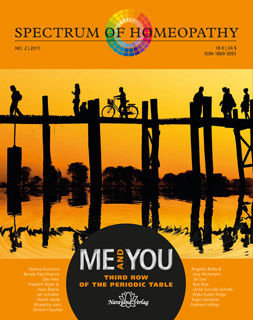
average customer rating:  187
1874,6 out of 5 Stars 125 reviews (german), 62 reviews (english) Top commentsShow newest comments firstDr Joan Vidal-Jove verified purchase

6 years ago
Excellent mix of subjects and themes
Wonderful reviews, specifically the ones dedicated to vaccination read more ... 66 people find this helpful. Do you find this helpful?
 Yes Yes No NoJohanna Stahl verified purchase

4 years ago
Homeopathy, an effective medicine
After everything I am hearing at the moment, it was very good for me to read the reports of doctors from different countries who were able to help patients with homeopathy. I was very impressed by the article on CO2. All people worldwide who wear a mask are affected. This increases the CO2 content in the blood, which is harmful to us humans. It triggers symptoms that can easily be attributed to the virus. To all those who have contributed to this issue: Thank you very much! read more ... 40 people find this helpful. Do you find this helpful?
 Yes Yes No No
Original language: german, translated by Narayana
Show original simone verified purchase

8 years ago
Recommended specialised literature
Very informative, both for "newcomers" to homeopathy and for experienced homeopaths. Highly recommended overall. read more ... 19 people find this helpful. Do you find this helpful?
 Yes Yes No No
Original language: german, translated by Narayana
Show original Betina Quägber-Zehe M.A. verified purchase

4 years ago
Very exciting and informative reading
As an interested non-medical person (is there a female form of layperson??), I have read the articles very carefully and find them extremely informative. Fortunately, no one in our family has Corona yet, but we have been taking Influenzinum for several years and have been flu-free ever since. I would also see Bryonia as Genius epidemicus in our latitudes, as it shows the most similarities. read more ... 15 people find this helpful. Do you find this helpful?
 Yes Yes No No
Original language: german, translated by Narayana
Show original S. Voege verified purchase

3 years ago
Long Covid: Hervorragend
I think this booklet is really remarkable and excellent. The articles show that there are various homeopathic ways out of the misery if you are affected by Covid or the vaccination against it. This takes away a lot of fear and gives you the confidence to get through such a crisis well. Many thanks to the authors for their search for appropriate treatment options and for putting their knowledge into words and publishing it. This booklet is also interesting for laypeople and highly recommended. read more ... 12 people find this helpful. Do you find this helpful?
 Yes Yes No No
Original language: german, translated by Narayana
Show original Iris PH

4 years ago
Genius epidemicus
Last week, the new Spektrum booklet "Genius epidemicus - Homeopathy in times of the pandemic" arrived and I dived straight into it. It is so valuable to be able to study these wonderful experiences of colleagues (all over the world) in such a condensed form. Thank you for this opportunity. Your Spektrum team is doing a unique job, which I greatly appreciate! read more ... 9 people find this helpful. Do you find this helpful?
 Yes Yes No No
Original language: german, translated by Narayana
Show original eine Leserin verified purchase

3 years ago
I am thrilled!
I have now read several issues of "Spektrum der Homöopathie" and am enthusiastic about every issue. Reading them has given me an understanding of the topic in question that I didn't have before, and in a short space of time, because the basic and important information is well structured and presented in an interesting way. I also feel that there is a lot of passion behind this magazine, which has a very motivating effect on me. Thank you very much for having it! read more ... 7 people find this helpful. Do you find this helpful?
 Yes Yes No No
Original language: german, translated by Narayana
Show original Janine verified purchase

8 years ago
Spectrum of Homeopathy
Always inspiring and relevant. I find that I often go back to my library of Spectrum journals to re-read for reference when I have unusual cases as they provide me with alternative answers. read more ... 7 people find this helpful. Do you find this helpful?
 Yes Yes No NoM. Sandvoss verified purchase

4 years ago
Important information
A very substantial, successful booklet. Also with regard to the general corona policy, which has so far tried to ignore homeopathy. read more ... 6 people find this helpful. Do you find this helpful?
 Yes Yes No No
Original language: german, translated by Narayana
Show original |
||||||


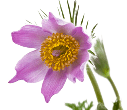
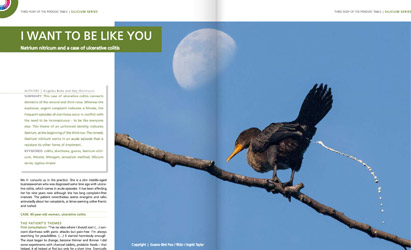
















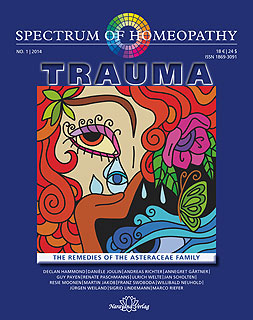
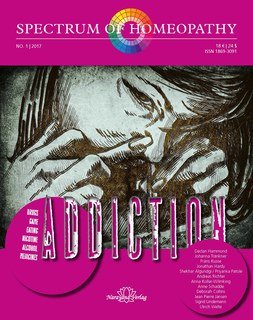
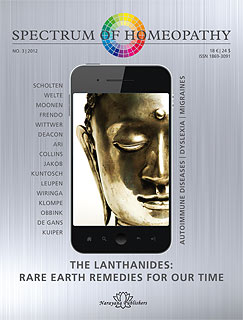
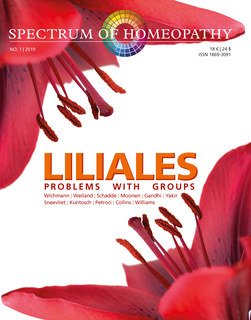
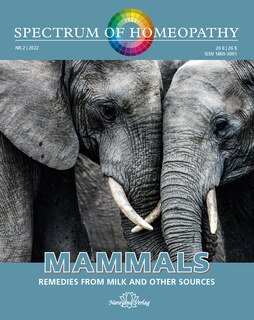
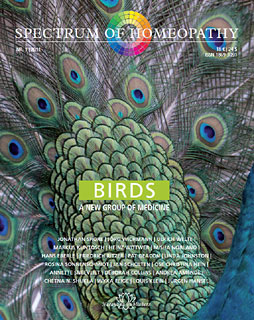
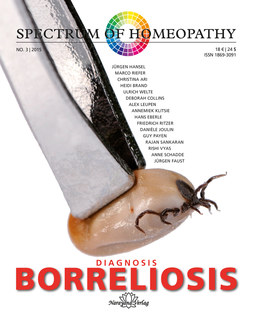
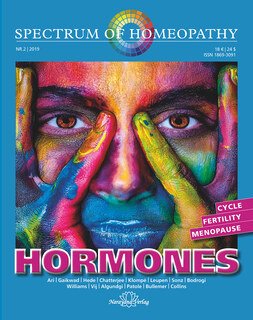
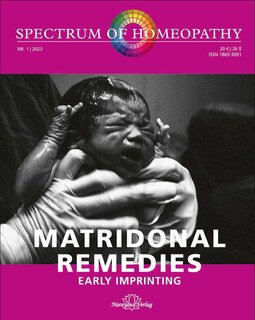
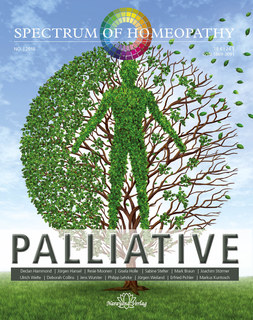
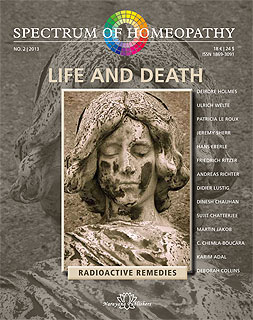
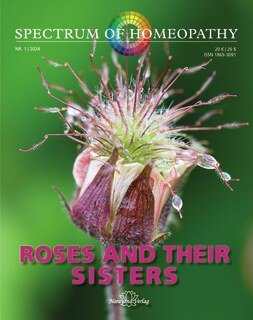


The Infect Spectrum is one of the best journals I can remember. So many coherent approaches to the remedy, all written by competent authors, so many good facets you won't find anywhere else in a journal. Every article is coherent and informative.
I particularly liked the tips from the experienced Ute Bullemer, whom I didn't know before; I will think of Anantherum for the frequent cervical erosion; Erodium is also often good, by the way.
Heiner Frei's method is well presented and has long been a welcome addition to our daily routine.
I found T. Curtis' description of the trembling aspen, which she describes very well and substantiates with cases that can then also be explained by plant theory, to be excellent work.
D. Payrhuber also has very nice cases, especially the two Helleborus cases.
Rajan Sankaran's Pulsatilla case also coincides with our best Puls cases, because they are not just as gentle as is always claimed: this characteristic is part of the picture and corresponds to stage 2. I found the fact that the patient indignantly slapped a Riksha driver interesting, because it is true: the Ranunculaceae are all more or less quickly indignant and so irritable that they can also strike, as is known from Staph. Internal or external trembling or quivering is also common to all Ranunculaceae.
Franz Swoboda's excellent article made me laugh a lot. It should be added that the quintessence of his "epidemic" is also described in Jan Scholten's Elements: Ant-t helps practically all cases of chronic bronchitis to a greater or lesser extent (he did not claim this about any other remedy, and it is true), but it does not cure. His new observation of the mycoplasma nosode as a counterpart is particularly interesting.
Then the cholera article: simply super, the best thing I have read about cholera so far. Especially the good refutation that only the avoidance of bloodletting and the (low) intake of fluids was the only reason for the indisputable superiority of the homeopathic treatments at that time, I found very conclusive.
Then the Iquilai study: where can you find something like that today? First class.
I even found Kate Birch's birch drink for all vaccination problems interesting, even if it has to be said that you can make things unnecessarily difficult for yourself with too many theoretical considerations. At least you understand why everything has to be packed into a potion. A nice case, after all.
The molluscs by Mrs Schuller-Schreib are also worthwhile. In this context also the Calc case by K Adal.
Then also the reference to the index at the end: a super booklet. read more ...
Show original
Show original